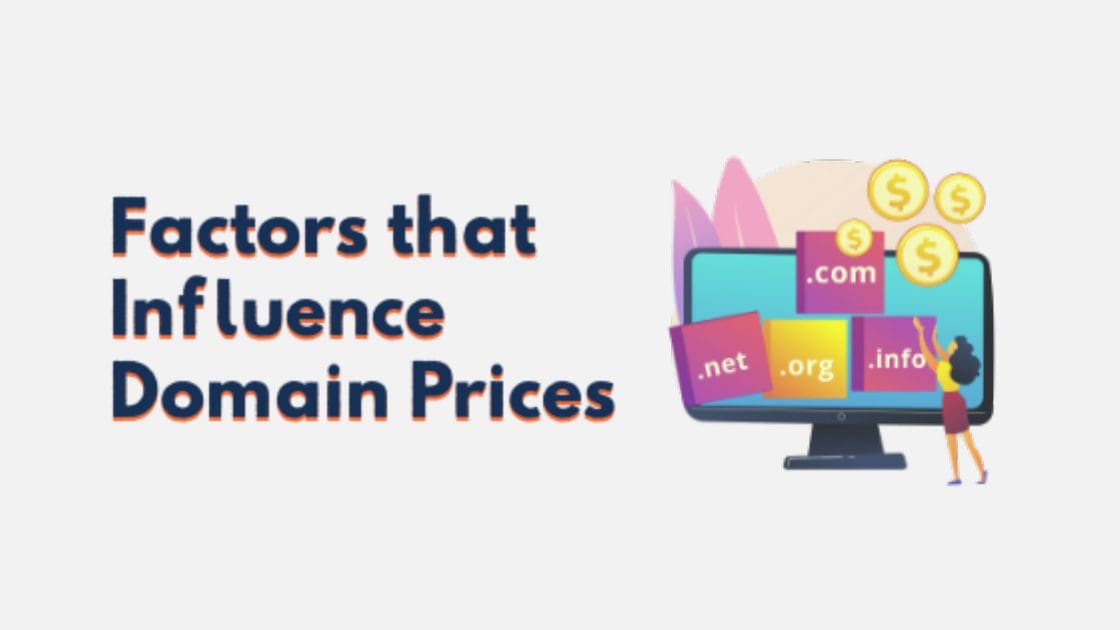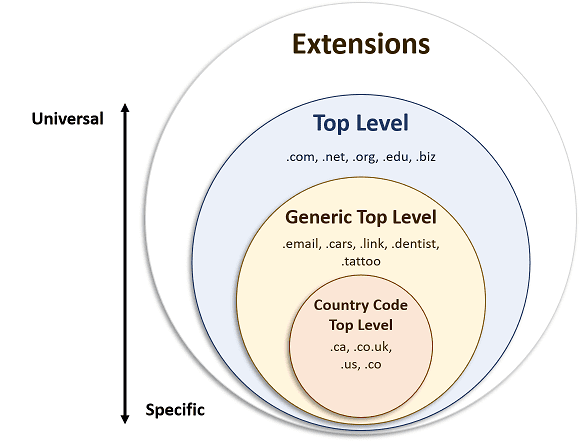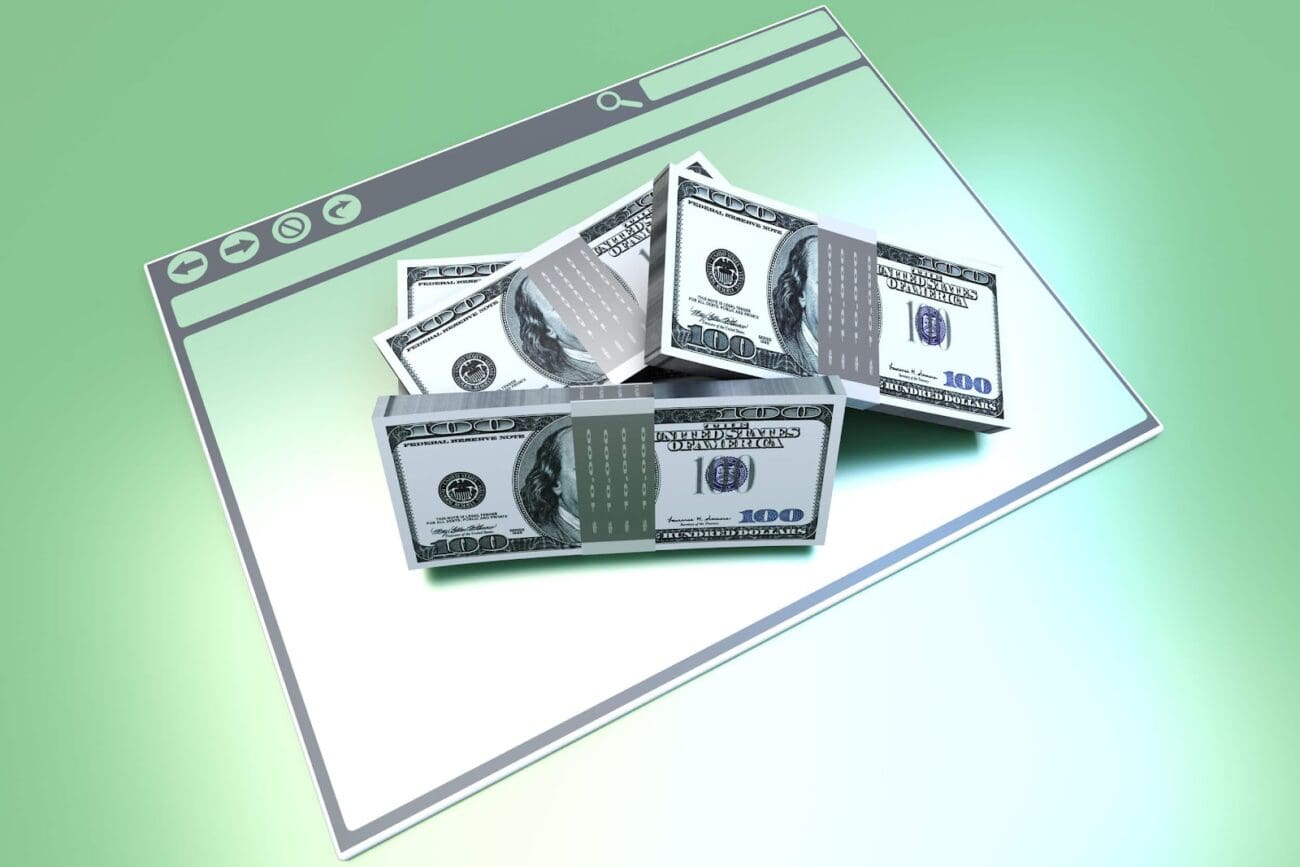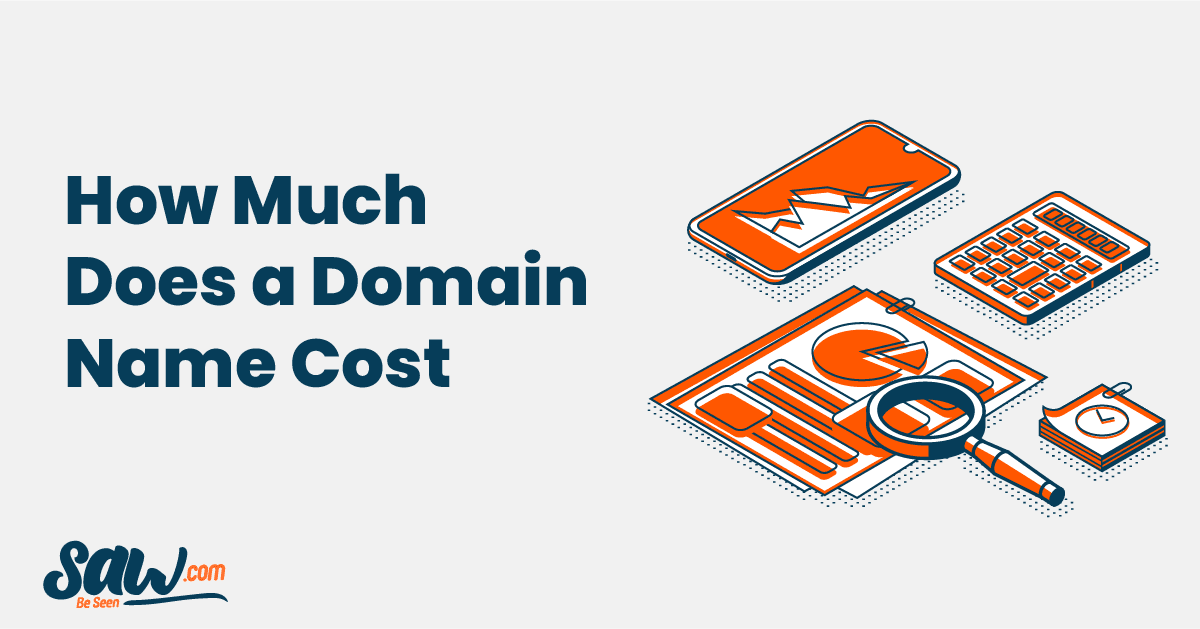As the digital landscape continues growing, more people understand how important it is to have a solid online presence. A creative domain name is at the heart of this presence – the unique address that directs users to your website.
In this blog post, we’ll dive deep into website domain cost, exploring various factors influencing pricing and the potential ROI of owning a great domain.
Factors that Influence Domain Prices

There are many factors that affect the desirability, and therefore cost, of a custom domain. Let’s take a look at the most important factors influencing the demand for domain names.
1. Availability of the Domain Name
A domain name’s availability is one of the major factors affecting its price. If the domain you want already belongs to someone else, you’ll likely have to pay a premium to buy it from the current domain owner if they’re willing to sell. On the other hand, if the domain is unregistered (a new domain name), you can buy it for a lower price through a reputable domain registrar.
However, even unregistered domain names are priced according to their desirability. Registrars calculate which domains fall into premium tiers and are worth more relative to alternatives.
Many registrars also offer web hosting services, sometimes including a free domain name for the first year. If you plan on using a website builder, you can often get a free domain if you commit to a year of service.
2. Domain Extensions (TLDs)

Domain extensions, or Top-Level Domains, play a major role in a domain name’s price. The big three you are undoubtedly familiar with are .com, .org, and .net. Only recently did the .com extension fall below 50% of all websites in existence. It now sits at 47%, which is still the most popular TLD by a wide margin.
Purchasing a new domain typically falls within the price range of $10 to $20 per year. Moreover, Country code TLDs like .ca, .uk, or .de are less in demand than popular extensions like .com, making them an economical option for businesses and websites targeted at a specific region.
Generic Top-Level Domains (or GTLDs), such as .xyz, .link, or .inc, are put into different tiers. These tiers are dependent on whether the GTLD is determined to be premium. For example, .link is in the lowest tier and renews for around $7. The most expensive tiers could cost up to $5,000 per year. It all depends on the quality of the name.
Certain extensions, such as .edu and .gov, are reserved for specific institutions (in this case, those related to educational institutions or government). These special extensions are regulated by those managing the TLD and are generally not available to the public. You must meet certain criteria to qualify, such as .law being reserved for licensed lawyers.
3. Industry and related market
As with any aspect of business, sometimes the market is hot, sometimes it isn’t. This can have a notable impact on domain value, as well.
For example, domains referencing “ai” are currently surging in demand and value. On the other hand, as the crypto craze is cooling off, domains with the term “coin” are also dropping in demand and price.
In general, high-demand industries command higher demand for related domains, especially industries related to tech and the Internet in general. The demand for these domains will ebb and flow with the market they relate to, as with their value.
4. Perceived Value of the Domain Name
The perceived value of a domain name is somewhat subjective, but certain characteristics will predictably make some domains more desirable than others. For example, short, memorable names with clear branding potential typically command higher prices than longer, less memorable alternatives.
The age of a domain also plays a role in its perceived value. An older, more established domain may have higher perceived value because it has been used for a long time already.
The most important factors to consider when purchasing a domain name are:
- The domain extension
- The length
- The industry
- How universal it is (is it known in multiple languages?)
- Memorability
- Easy to spell
- Branding elements
- Government, economic, and social factors
The perfect example of a great domain name is yoga.com because it’s short, easy to remember, has market dominance, and has immediate trustworthiness. Additionally, the word yoga is known in many languages.
A domain name’s perceived value is determined by market demand, but carefully considering these factors can help you choose a high-value domain that will benefit you in the long run.
5. Quantity of Keywords within the Domain Name
The quantity of keywords within a domain name is one factor that can influence its cost. While domain names containing popular keywords may have higher perceived value in search engine rankings, it’s important to consider the relevance and branding potential of a domain name rather than just focusing on the number of keywords it contains.
In fact, using too many keywords in a domain name may actually harm your SEO efforts. Search engines are increasingly sophisticated and can detect when websites are over-optimizing their content with too many keywords.
Therefore, choosing a domain name that accurately reflects your brand or business is crucial while still being concise, memorable, and easy to spell. A short and relevant domain name will likely be remembered by potential customers and can help build brand recognition over time.
Here are some examples of keyword-stuffed domain names:
- seattle-cat-and-dog-vet-clinic.com
- freeandfastphonerepair.com
- weddingandeventplannersofaustin.biz
How much a domain is worth can be subjective and influenced by multiple factors, so it’s essential to evaluate your options carefully before you make a purchase decision.
6. Hiring a Domain Name Broker

The process of purchasing a domain, especially if you’re entering a bidding war, can be overwhelming and confusing. A domain broker service, like Saw.com, specializes in all aspects of the domain buying process, such as:
- Negotiating a fair price for the domain name
- Identifying who the current owner is
- Organizing all the paperwork, escrow, and transfer of the domain name to ease the process for the buyer.
Popular Domain Sales and Industry Trends
The domain sales and pricing world is constantly changing, with new trends and industry developments emerging regularly. Keeping up with these trends can be crucial for anyone purchasing a domain name at a reasonable price.
A recent industry trend has been the rise of premium domains, which are typically shorter, more memorable names with popular TLDs like .com or .net. Premium domains are more expensive domains than average domains and can sell for thousands or millions of dollars, making them inaccessible to many individuals or small businesses.
However, it’s important to remember that domain names can be effective without being expensive – a well-chosen name that aligns with your brand and values can be just as valuable as a high-priced premium domain.

Examples of Successful Domain Sales
Successful domain sales can serve as inspiration for individuals and businesses alike. Since entering the domain industry, Saw.com has made record-breaking sales. The sale of Sex.com sold for a staggering $13,000,000. Additionally, Saw.com brokered the successful sale of AI.com.
While these examples represent the extreme end of the spectrum, they highlight the potential ROI that can come from owning a high-value domain. In many cases, businesses have leveraged their premium domain names to drive significant traffic and revenue, making the initial investment well worth it.
Don’t let these huge numbers scare you. You can still get a quality domain name for your online business at an affordable option – even if you’re on a budget.
Current Industry Trends in Domain Name Pricing
As domain names have become essential for businesses and organizations, it’s crucial to understand the current trends in domain pricing to make an informed decision. The most popular TLDs, like .com and .net, are likely more expensive because of their familiarity and recognition.
Industry trends show that shorter domains with fewer characters tend to sell for higher prices. Domains with popular keywords or phrases can also fetch a high price due to their perceived SEO value.
When determining the value of a domain, factors such as the extension and potential audience should also be taken into consideration.
Shorter domains are perceived to have higher value, leading to a higher price tag. As demand for premium domain names increases, prices for these sought-after domains continue to rise.
Ultimately, supply and demand within the industry drive the cost of domain names, making it vital to keep up with trends and developments when considering purchasing a domain name.
Return on Investment of Purchasing a Domain Name
While the cost of a premium domain name may seem steep, it can be a valuable asset for your business. By choosing a domain name that accurately represents your brand and is easy for customers to remember, you can increase brand recognition and develop a stronger online presence.
Owning a premium domain name can drive traffic to your website and ultimately lead to increased revenue. Research has shown that having a memorable and relevant domain name can improve click-through rates, as customers are more likely to trust and engage with a website that has a professional and trustworthy URL.
So while the initial cost of purchasing a premium domain name may be high, the long-term benefits and potential return on investment make it an attractive option for businesses looking to establish themselves online.
How Much Does it Cost to Buy a Domain Name? That Depends
Domain pricing can vary based on the pricing model, availability, type of domain, perceived value, length of registration period, keyword usage, and prior domain ownership. While some domain names are sold at a flat rate, others are sold through bidding.
Understanding these factors is crucial in determining if purchasing a domain name will be a good return on investment.
If you’re considering purchasing a domain name, the experts at Saw.com can help. As a full-service broker, we can help with domain appraisal, branding, buying, selling, and more. Contact us today!

